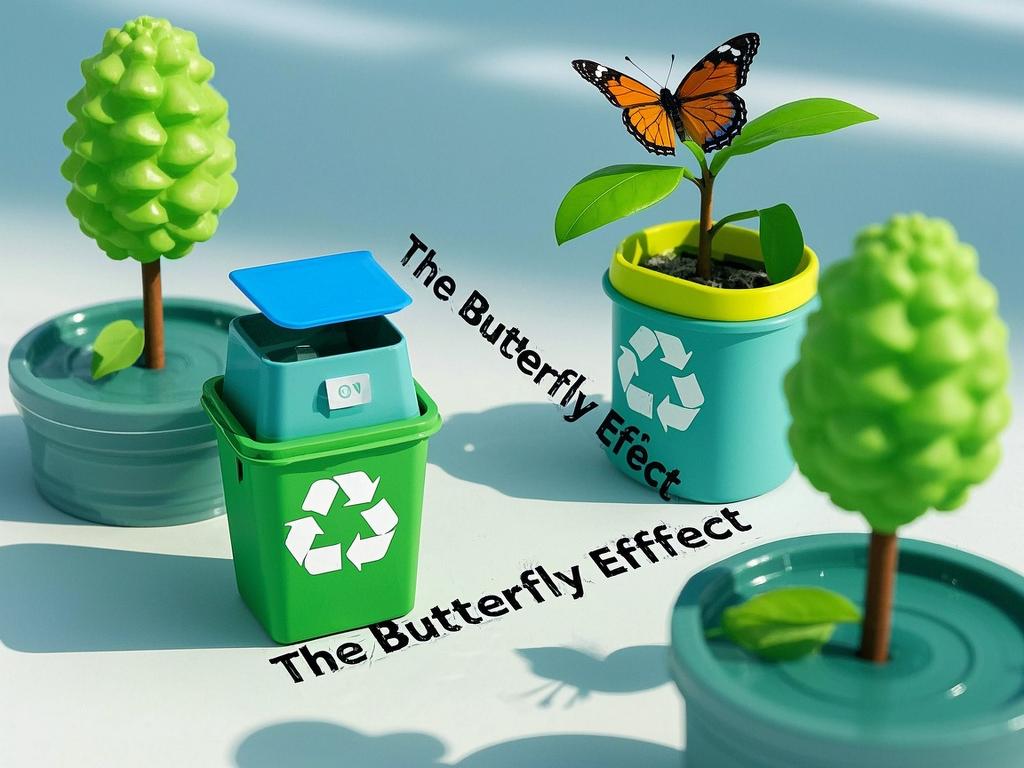
# The Butterfly Effect in Environmental Movements: How Small Actions Matter!
In the grand tapestry of our planet's environmental saga, the concept of the butterfly effect looms large. It's a metaphor that suggests how a seemingly insignificant event in one part of the world can trigger a chain of reactions with far-reaching consequences across vast distances. In the realm of environmental movements, this idea takes on a profound significance, highlighting the power of small actions to create monumental change.
Let's start by delving into the history of environmental awareness. Back in the day, the thought of our daily choices having a global impact was scarcely a blip on the radar. But as the decades rolled by, the signs of environmental degradation became impossible to ignore. The once-clear blue skies were marred by smog, and the lush green landscapes were giving way to barren deserts at an alarming rate. This was the wake-up call that set the stage for the modern environmental movement.
One of the early catalysts was the publication of Rachel Carson's *Silent Spring* in 1962. This groundbreaking book exposed the devastating effects of pesticides on the environment and wildlife. It was like a pebble dropped into a still pond, creating ripples that spread far and wide. Suddenly, people started to realize that their actions, even something as seemingly innocuous as using a certain brand of pesticide, could have unforeseen consequences for the delicate balance of nature.
Fast forward to today, and we're in the midst of a global environmental crisis. Climate change is no longer a distant threat; it's here, and it's hitting us hard. Rising sea levels, extreme weather events, and the loss of biodiversity are just some of the symptoms. But amidst this gloom, there's a glimmer of hope. The environmental movement has grown exponentially, with millions of people around the world taking action, big and small.
Take, for example, the simple act of recycling. You might think that tossing a plastic bottle into the recycling bin is a no-brainer, but did you know that it can have a huge impact? According to recent data, if every household in the United States recycled just one additional plastic bottle per day, it would save enough energy to power over 250,000 homes for a year. That's like a mini environmental revolution sparked by a single bottle!
And it's not just about recycling. Every time you choose to walk or bike instead of drive, you're reducing your carbon footprint. Every time you plant a tree in your backyard, you're contributing to the fight against climate change. These small actions, when multiplied by millions of people, can create a tidal wave of change.
But here's the thing: the butterfly effect doesn't just work in one direction. It's a two-way street. Just as our small actions can have a positive impact on the environment, the state of the environment can also influence our actions. When we see the effects of climate change firsthand, like a drought drying up our local rivers or a wildfire raging through our neighborhood, it makes us more aware of our choices. It's a wake-up call that prompts us to take even more action to protect our planet.
So, how can we harness the power of the butterfly effect in the environmental movement? First and foremost, we need to be aware of our actions. Every time we make a decision, whether it's what to eat for lunch or how to commute to work, we should consider the environmental impact. It's not about being perfect; it's about making small, conscious choices that add up over time.
Secondly, we need to spread the word. Share your environmental stories with your friends, family, and colleagues. Encourage them to take action too. You'd be surprised how contagious a passion for the environment can be. One person's enthusiasm can inspire others to make a difference, creating a chain reaction of positive change.
Finally, we need to hold our governments and corporations accountable. They have the power to make big changes, and we need to make sure they do. Whether it's through voting for environmentally conscious leaders or demanding that companies adopt sustainable practices, we have a voice, and we should use it.
In conclusion, the butterfly effect in environmental movements is a powerful force for change. Small actions, when multiplied and coordinated, can have a profound impact on our planet. So, the next time you're about to toss that plastic bottle in the trash or drive instead of walk, think about the butterfly effect. Your small action could be the start of a much larger movement towards a more sustainable future. Let's all be the butterflies that flap our wings and create a storm of positive change for our planet. Are you ready to join the movement?

